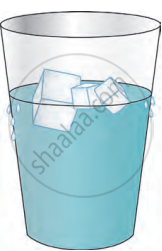Water occurs in a liquid state under ordinary conditions. It is a fluid substance and does not have its own shape, but it has volume. It is an excellent solvent, meaning it can dissolve many substances, which is why it's often called the "universal solvent."
- Water also has a high specific heat capacity, meaning it can absorb a lot of heat before its temperature rises, which helps regulate temperatures in nature and in living organisms.
- Water exhibits cohesion, the property that makes water molecules stick to each other, and adhesion, which makes water stick to other surfaces.
- These properties enable processes like capillary action, where water can move through narrow spaces, such as in plant roots and stems.
- Additionally, water expands when it freezes, meaning ice is less dense than liquid water, which is why ice floats. This unusual property is vital for aquatic life, as it insulates water bodies in cold climates.
Density of water:
The interrelation between the volume and mass of a substance: the space occupied by a substance is its volume. The store of matter in a substance is its mass.
Density = `"mass" / "volume"`
Mass is measured in grams and volume in cubic centimetres.
density = `"gm" / "cc"`
Example,
If the mass of 1 litre of water is 1 kilogram:
- 1 kilogram (kg) = 1000 grams (g)
- 1 liter = 1000 milliliters (ml) or 1000 cubic centimeters (cc)
Using the density formula:
Density of water = `"1000 gm" / "1000 cc"` = `"1 gm" / "1 cc"`
So, the density of water is 1 g/cc. This means that every cubic centimetre of water weighs 1 gram.


